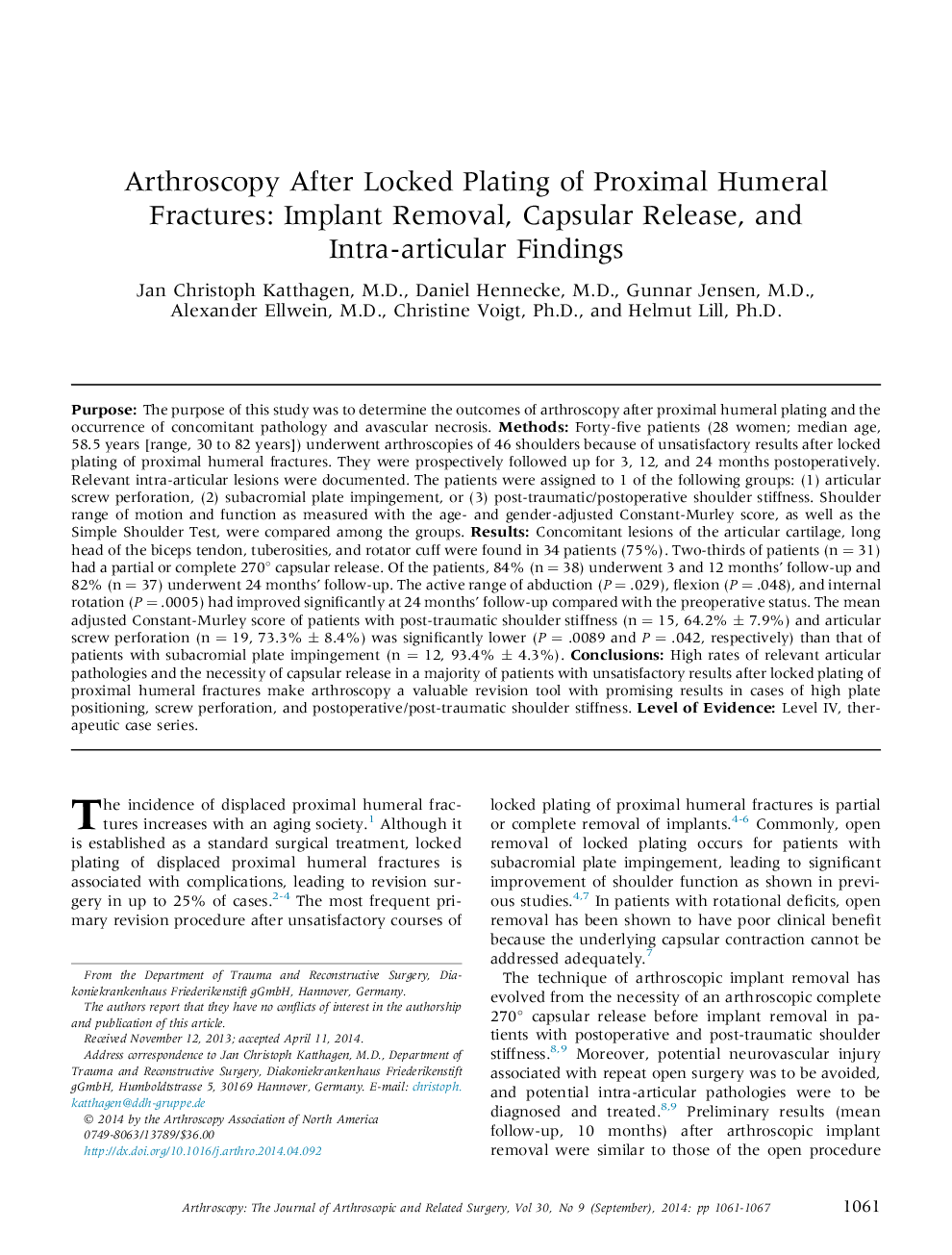| کد مقاله | کد نشریه | سال انتشار | مقاله انگلیسی | نسخه تمام متن |
|---|---|---|---|---|
| 4042861 | 1603492 | 2014 | 7 صفحه PDF | دانلود رایگان |
PurposeThe purpose of this study was to determine the outcomes of arthroscopy after proximal humeral plating and the occurrence of concomitant pathology and avascular necrosis.MethodsForty-five patients (28 women; median age, 58.5 years [range, 30 to 82 years]) underwent arthroscopies of 46 shoulders because of unsatisfactory results after locked plating of proximal humeral fractures. They were prospectively followed up for 3, 12, and 24 months postoperatively. Relevant intra-articular lesions were documented. The patients were assigned to 1 of the following groups: (1) articular screw perforation, (2) subacromial plate impingement, or (3) post-traumatic/postoperative shoulder stiffness. Shoulder range of motion and function as measured with the age- and gender-adjusted Constant-Murley score, as well as the Simple Shoulder Test, were compared among the groups.ResultsConcomitant lesions of the articular cartilage, long head of the biceps tendon, tuberosities, and rotator cuff were found in 34 patients (75%). Two-thirds of patients (n = 31) had a partial or complete 270° capsular release. Of the patients, 84% (n = 38) underwent 3 and 12 months' follow-up and 82% (n = 37) underwent 24 months' follow-up. The active range of abduction (P = .029), flexion (P = .048), and internal rotation (P = .0005) had improved significantly at 24 months' follow-up compared with the preoperative status. The mean adjusted Constant-Murley score of patients with post-traumatic shoulder stiffness (n = 15, 64.2% ± 7.9%) and articular screw perforation (n = 19, 73.3% ± 8.4%) was significantly lower (P = .0089 and P = .042, respectively) than that of patients with subacromial plate impingement (n = 12, 93.4% ± 4.3%).ConclusionsHigh rates of relevant articular pathologies and the necessity of capsular release in a majority of patients with unsatisfactory results after locked plating of proximal humeral fractures make arthroscopy a valuable revision tool with promising results in cases of high plate positioning, screw perforation, and postoperative/post-traumatic shoulder stiffness.Level of EvidenceLevel IV, therapeutic case series.
Journal: Arthroscopy: The Journal of Arthroscopic & Related Surgery - Volume 30, Issue 9, September 2014, Pages 1061–1067
